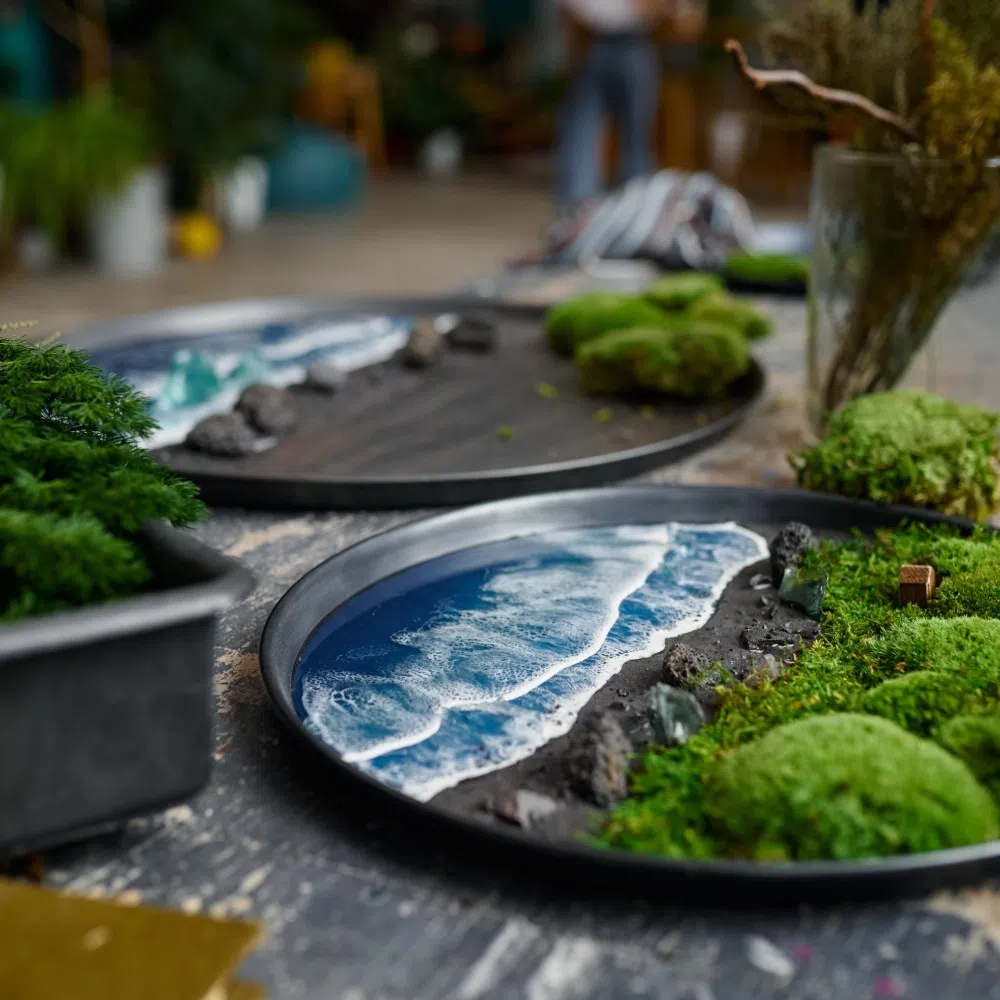Water is to dioramas as hands are to portrait drawing—seemingly impossible to get right. After all, how can it be possible to capture the shifting, glittering magic of moving water in a motionless epoxy craft? Well, though nothing could ever look exactly the same, we have some helpful tips for getting realistic water in miniature landscapes.
Choose the Right Materials
Epoxy resin is one of the most popular options and best options for fake water due to its clarity and ability to cure without bubbles. You can use acrylic gels or even transparent silicone for smaller areas, but the bulk of your project should be epoxy.
Choose a high-quality epoxy from a supplier you like, ideally one that caters to crafters.
Layering for Depth
The most important technique for inspiring realism in fake water is creating the illusion of depth. To do this, start with a dark base color, gradually lightening it as you build up layers of epoxy. This technique will give the impression of deeper and shallower areas. Adding thin layers of lighter shades throughout can also help you simulate the natural color variations found in real bodies of water.
Adding Details
Details like ripples, waves, and reflections are what bring your water elements to life. One simple technique is to use a heat gun or hairdryer to gently create surface waves in epoxy resin before it sets. For smaller ripples, a fine-tipped brush can add subtle texture.
For reflections, you can place small objects or use gloss varnish to create believable reflective surfaces.
Infusing Color and Pigment
The color you use for your water will affect its realism. Natural water isn’t just blue; it can range from green to brown depending on its environment. Use different types of coloring and pigments to achieve different effects. For example, the composition and properties of mica pigment can add a shimmering effect to mimic sunlight hitting the water’s surface.
Creating realistic water in miniature landscapes boils down to having quality supplies and an eye for detail. In the end, your goal should be to aim for likeness, not perfection. After all, water isn’t perfect—each ripple and eddy is different, so your art should reflect this. Spend time practicing these tips and you’ll enhance the authenticity of your dioramas and bring your miniature scenes to life.
Image Credit: Nomad_Soul, license #549744176




Comments